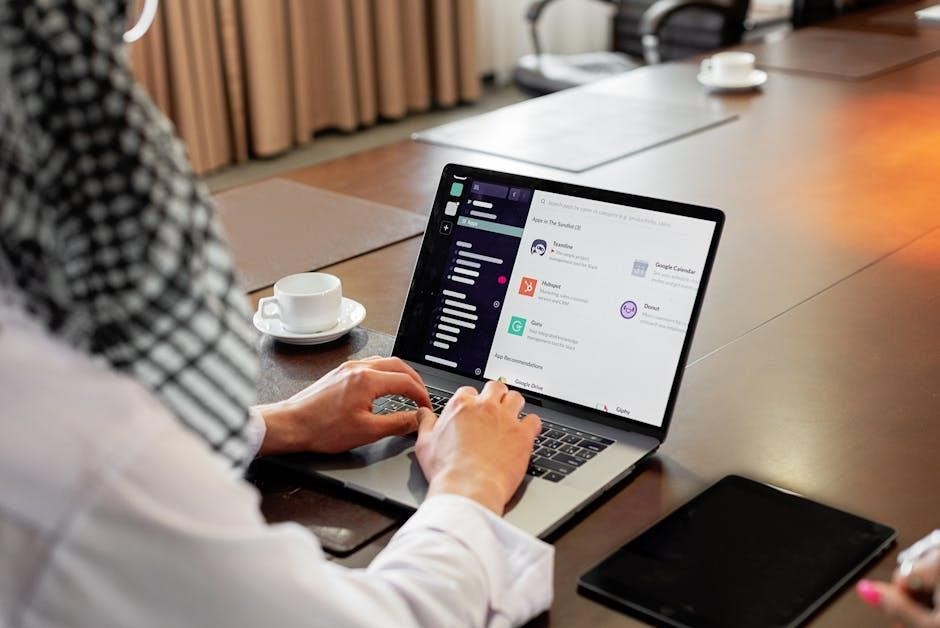Phishing emails are deceptive messages designed to steal sensitive information by mimicking legitimate communications. Understanding these threats is crucial for protecting personal and organizational data security effectively.
1.1 What Are Phishing Emails?
Phishing emails are deceptive messages designed to trick recipients into revealing sensitive information, such as passwords, credit card numbers, or personal data. These emails often appear legitimate, mimicking communications from trusted organizations like banks, government agencies, or well-known companies. Attackers use psychological manipulation, urgency, or false alarms to provoke immediate actions, such as clicking malicious links or downloading harmful attachments. Phishing emails are a common cybercrime tactic, evolving to bypass security measures and exploit human vulnerabilities. Recognizing their subtle signs is essential for protecting oneself and organizations from data breaches and financial loss.
1.2 Importance of Understanding Phishing Emails
Understanding phishing emails is crucial for safeguarding personal and organizational data. As cybercriminals refine their tactics, recognizing phishing attempts becomes essential to prevent data breaches. These emails often bypass traditional security measures by exploiting human vulnerabilities rather than technical weaknesses. By identifying red flags like suspicious senders, generic greetings, and urgent tones, individuals can avoid falling victim to scams. Awareness and education are key to protecting sensitive information and maintaining digital security in an increasingly vulnerable online landscape.
1.3 Purpose of the Article
This article aims to educate readers about phishing emails by providing detailed examples, red flags, and prevention strategies. It serves as a comprehensive guide to help individuals and organizations recognize and combat phishing threats. By examining real-life examples and best practices, the article empowers users to enhance their email security and protect sensitive information from cybercriminals. The content is designed to be accessible and actionable, ensuring readers can apply the knowledge to safeguard their digital identities and assets effectively.

Common Types of Phishing Emails
Phishing emails come in various forms, including deceptive, spear, whaling, CEO fraud, and PDF-based attacks. Each type targets victims differently, aiming to steal sensitive information through deception and manipulation.
2.1 Deceptive Phishing
Deceptive phishing is the most common type, involving fraudulent emails that impersonate legitimate organizations. Attackers use fake identities and logos to trick recipients into revealing sensitive information. These emails often create a sense of urgency, such as account alerts or password resets, prompting immediate action. Recipients may be directed to malicious websites or asked to download attachments that install malware. Deceptive phishing preys on trust, making it essential to verify the sender’s identity and be cautious of unsolicited requests.
2.2 Spear Phishing
Spear phishing targets specific individuals or organizations, using personalized details to appear legitimate. Attackers research victims to craft convincing emails, often impersonating trusted sources like colleagues or companies. These emails may reference real projects, invoices, or policies to manipulate recipients into revealing sensitive information or downloading malicious attachments. Spear phishing exploits familiarity, making it harder to detect. Examples include fake IT department requests or urgent messages from executives. The goal is to bypass security measures and gain access to sensitive data, leading to potential data breaches or financial loss.
2.3 Whaling Phishing
Whaling phishing targets high-level executives or critical personnel within an organization. These sophisticated attacks mimic legitimate communications from trusted sources, such as CEOs or legal counsel, to trick victims into revealing sensitive data or transferring funds. Whaling emails often contain urgent requests, such as account verification or financial transactions, to create a sense of urgency. Attackers use detailed research to tailor the email, making it appear authentic and increasing the likelihood of compliance. This type of phishing can lead to significant financial losses and reputational damage, emphasizing the need for heightened vigilance among leadership teams.
2.4 CEO Fraud Phishing
CEO fraud phishing involves attackers impersonating a company’s CEO or senior executive to trick employees into transferring funds or sensitive data. These emails often appear urgent, requesting immediate action without verification. Attackers research the target company to craft convincing messages, bypassing traditional security measures. Examples include requests for wire transfers or confidential employee information. The fraudulent emails are designed to exploit trust in leadership, leading to significant financial loss and reputational damage. This tactic preys on hierarchical respect within organizations, making it highly effective and dangerous.
2.5 Phishing via PDF Attachments
Phishing via PDF attachments is a sophisticated tactic where attackers embed malicious links or forms within PDF files. These documents often appear legitimate, such as invoices, contracts, or official notices, tricking recipients into revealing sensitive information. Attackers exploit the trust associated with PDFs, which are commonly used for professional communication. The embedded links may redirect to fake websites designed to steal login credentials or financial data. This method is particularly effective due to the deceptive nature of the attachments, which often mimic legitimate sources like banks or organizations. Users must remain cautious when opening PDFs from unfamiliar senders and verify their authenticity before interacting with any embedded content. Regularly updating antivirus software and being vigilant about unsolicited attachments can help mitigate this threat. By understanding these tactics, individuals and organizations can enhance their defenses against phishing attacks disguised as PDF files. Stay informed and proactive in safeguarding personal and organizational data from these evolving threats.

Red Flags of Phishing Emails
Suspicious sender information, urgent tones, generic greetings, and spelling errors are common red flags. Be cautious of unusual requests or links, as these often indicate phishing attempts.
3.1 Suspicious Sender Information
Suspicious sender information often includes mismatched or slightly altered email addresses. For example, a legitimate company’s email might be modified by changing a single character, such as “paypal” to “paypaI.” Additionally, generic sender addresses like “securityalert@gmail.com” or “admin123@yahoo.com” are red flags, as legitimate organizations typically use official domain names. Always verify the sender’s email address by hovering over the “From” field to ensure it matches the organization it claims to represent. This simple step can help identify phishing attempts early.
3.2 Urgent or Threatening Tone
Phishing emails often use an urgent or threatening tone to provoke immediate action. Messages like “Your account will be suspended if you don’t respond immediately” or “Legal action will be taken unless you verify your details” are common tactics. These emails aim to create a sense of panic, prompting recipients to act without hesitation. Examples include alerts about unauthorized transactions, expired passwords, or overdue payments. Always be cautious of emails that demand quick responses, as this is a hallmark of phishing attempts designed to bypass careful scrutiny.
3.3 Generic Greetings
Phishing emails frequently use generic greetings such as “Dear Customer” or “Hello User” instead of addressing recipients by their actual names. Legitimate organizations typically personalize communications, especially when requesting sensitive information. Be wary of emails that lack personalization, as this is a common trait of phishing attempts. Examples include messages claiming to be from banks, social media platforms, or online retailers that fail to include specific details about your account or relationship with the company. This lack of personalization is a red flag indicating potential fraud.
3.4 Spelling and Grammar Mistakes
Phishing emails often contain spelling and grammar mistakes, which are red flags for fraudulent activity. Legitimate organizations typically communicate professionally, avoiding such errors. Examples include phrases like “your account has been compromized” or “click here to secure your data immediately.” These mistakes are intentional, aiming to bypass automated filters. Always be cautious of emails with poor language, as they are likely phishing attempts. Reporting such emails can help protect others from falling victim to these scams. Stay vigilant and prioritize email security.
3;5 Unusual Requests or Links
Phishing emails often include unusual requests or suspicious links that prompt immediate action; For example, an email might urge you to click a link to reset your password or verify account details. Legitimate companies rarely send such requests without prior context. Hover over links to check their destinations and avoid clicking on unfamiliar URLs. These tactics aim to trick recipients into revealing sensitive information or downloading malware. Always verify the authenticity of such requests before taking any action. Recognizing these signs is key to preventing phishing attacks. Stay cautious and prioritize your online security.

Examples of Phishing Emails
Phishing emails often mimic legitimate communications, such as fake password resets, bank account alerts, or document notifications. These examples are widely available in PDF resources for training purposes.
4.1 Fake Password Reset Requests
Fake password reset requests are a common phishing tactic. These emails often claim that your account has been compromised or that suspicious activity was detected. They prompt you to click on a link to reset your password. However, the link leads to a fraudulent website designed to capture your login credentials. These emails often create a sense of urgency to pressure the victim into acting quickly without verifying the authenticity of the request. Examples of these phishing attempts are widely documented in PDF resources for employee training and awareness programs. By studying these examples, individuals can better recognize and avoid falling victim to such scams.
4.2 Bank Account Alerts
Bank account alert phishing emails often appear as urgent notifications about suspicious activity or unauthorized transactions. These emails claim to be from legitimate financial institutions, urging recipients to click a link to verify their account details. The links typically lead to fake websites designed to steal banking credentials. Examples of these phishing emails are often included in downloadable PDF resources for training purposes, highlighting common tactics like urgency and fake account alerts to trick victims into revealing sensitive financial information. Recognizing these patterns is key to avoiding bank-related phishing scams.
4.3 Document Sharing Notifications
Document sharing phishing emails mimic notifications from platforms like Google Drive or SharePoint. They often claim that a document has been shared with you and prompt you to click a link to view it. These emails may appear legitimate, using familiar branding and language. However, the links often lead to phishing sites or malicious downloads. Examples of these emails, such as fake PDF document alerts, are widely available in downloadable resources for training purposes. They highlight common tactics like urgency and false document sharing to trick users into revealing credentials or downloading malware, emphasizing the need for caution and verification.
4.4 Employee Termination Agreements
Phishing emails disguised as employee termination agreements often target corporate executives. These emails mimic legitimate communications from HR or management, urging recipients to review or sign termination documents. They create a sense of urgency, threatening legal consequences or account termination if ignored. Examples of these phishing emails, available in downloadable PDF resources, highlight tactics like spoofed sender information and malicious links. These emails aim to steal credentials or install malware, emphasizing the need for cautious verification of such requests before taking any action.
4.5 Shipping Confirmation Scams
Shipping confirmation scams are a common type of phishing email. These emails appear to be from reputable delivery services, informing recipients about a package delivery issue. They often include fake tracking numbers or links to update delivery details. Examples in PDF format reveal how attackers use urgency and spoofed sender information to trick victims into revealing personal data or downloading malware. These scams exploit the frequency of online shopping, making them highly effective. Printable examples for training highlight red flags like grammatical errors and suspicious links, aiding in employee education and prevention strategies.
4.6 Tax-Related Phishing Emails
Tax-related phishing emails often impersonate government agencies like the IRS or tax authorities. They may claim issues with refunds, payments, or filing status, urging immediate action. Examples in PDF format show how attackers use official logos and language to appear legitimate. These emails often include links to fake websites or attachments requesting sensitive financial information. Red flags include grammatical errors, generic greetings, and urgent tone. Printable examples highlight common tactics, such as threatening legal action or promising refunds, to deceive recipients into divulging personal and financial data.
4.7 Social Media Account Security Alerts
Social media phishing emails alert users about account security issues, such as unauthorized access or login attempts. These emails, often in PDF format, mimic platforms like Facebook or Instagram. They may include fake login links or request sensitive information to “secure” the account. Examples show how attackers use urgency and fear to prompt quick actions. Red flags include generic greetings, spelling errors, and suspicious links. Printable PDF examples highlight common tactics, such as fake security alerts, to trick users into revealing login credentials or personal data, compromising their accounts and privacy.

How to Identify Phishing Emails
Verify sender addresses, check for personalization, look for hidden links, and be cautious of attachments. Analyze tone and language to detect suspicious patterns and potential threats.
5.1 Verify the Sender’s Email Address

One of the first steps in identifying phishing emails is to verify the sender’s email address. Legitimate emails typically come from official domains, while phishing emails often use fake or slightly altered addresses. For example, a phishing email might appear to be from “customertupport@amaz0n.com” instead of “customer-support@amazon.com.” Hovering over the sender’s name can reveal the actual email address, helping you identify discrepancies. Always double-check the domain name for subtle misspellings or unusual characters, as these are common red flags in phishing attempts.
5.2 Check for Personalization
Legitimate emails often include personalization, such as addressing you by name or referencing specific transactions. Phishing emails frequently lack this detail, using generic greetings like “Dear Customer” or containing misspellings. Be wary of emails that create urgency or use threatening language to provoke immediate action. Legitimate organizations typically provide clear, non-urgent instructions. If an email lacks personalization or seems overly generic, it may be a phishing attempt. Always verify the sender’s identity through official channels before responding or clicking links.
5.3 Look for Hidden Links
Phishing emails often contain hidden links that are not immediately visible. Hovering over a link can reveal its true destination, which may differ from the displayed text. Be cautious of links embedded in buttons or images. Legitimate organizations typically provide clear, direct links. If a link seems suspicious or redirects to an unfamiliar site, avoid clicking on it. Always verify the link’s destination before interacting with it. This simple step can help prevent unintended access to malicious websites or downloading harmful content from disguised sources.
5.4 Be Cautious of Attachments
Phishing emails often include malicious attachments, such as PDFs, DOCX, or ZIP files, designed to infect devices or steal data. Be wary of unsolicited attachments, especially from unfamiliar senders. Malicious PDFs may contain embedded links or malware. Always verify the sender’s identity before opening attachments. Use antivirus software to scan files and ensure they are safe. Hover over links within attachments to check their destinations. Avoid downloading attachments from suspicious emails, as they can compromise your security and expose sensitive information to cybercriminals.
5.5 Analyze the Tone and Language
Phishing emails often use urgent or threatening language to provoke quick actions, such as “Your account will be suspended if you don’t act now.” They may also employ overly formal tones or generic greetings like “Dear Customer.” Legitimate organizations typically address you by name. Be cautious of emails with poor grammar, spelling mistakes, or an unusual tone that doesn’t match the sender’s usual communication style. Phishing emails often lack personalization and may contain vague requests, making them appear suspicious. Always question emails that create a sense of panic or urgency to trick you into revealing sensitive information.

Preventing Phishing Attacks
Preventing phishing attacks requires a combination of education, technology, and proactive measures. Use anti-phishing software, verify senders, and avoid suspicious links to stay secure.
6.1 Best Practices for Email Security
Implementing strong email security practices is essential to prevent phishing attacks. Always verify sender information and be cautious of unfamiliar links or attachments. Use antivirus software and firewalls to detect malicious content. Enable two-factor authentication for added protection. Regularly update security protocols and educate employees on phishing red flags. Monitor email accounts for suspicious activity and report potential threats immediately. These practices help create a secure environment and reduce the risk of falling victim to phishing scams.
6.2 Use of Anti-Phishing Software
Anti-phishing software is a critical tool in detecting and blocking malicious emails. These programs analyze email content for suspicious patterns, such as fake links or attachments, and alert users to potential threats. Advanced algorithms learn from phishing attempts to improve detection accuracy; Many solutions integrate with email clients to quarantine harmful messages automatically. Regular updates ensure protection against the latest phishing tactics. By deploying anti-phishing software, individuals and organizations can significantly reduce the risk of data breaches and maintain a secure digital environment.
6.3 Employee Training Programs
Employee training programs are essential for educating staff on recognizing phishing tactics. These programs often include real-life examples, such as fake PDF attachments or account alerts, to demonstrate common phishing techniques. By teaching employees to identify red flags like suspicious links or generic greetings, organizations can significantly reduce security risks. Regular training fosters a culture of vigilance, empowering employees to report suspicious emails and avoid costly data breaches. This proactive approach, combined with anti-phishing tools, creates a robust defense against evolving threats.
6.4 Implementing Two-Factor Authentication
Implementing two-factor authentication (2FA) adds an extra layer of security, making it harder for attackers to access accounts even if credentials are compromised. Phishing emails often aim to steal passwords, but 2FA ensures that a second form of verification is required. This method significantly reduces the risk of unauthorized access, protecting sensitive data from potential breaches. Organizations should mandate 2FA for all accounts, especially those targeted in phishing campaigns, to enhance overall security and safeguard against evolving threats effectively.
6.5 Regular Security Audits
Regular security audits are essential for identifying vulnerabilities and strengthening defenses against phishing attacks. These audits involve reviewing systems, protocols, and employee practices to ensure compliance with security standards. By analyzing email filters, authentication processes, and incident response plans, organizations can pinpoint weaknesses exploited by phishers. Audits also provide insights into the effectiveness of training programs, helping to improve employee awareness. Implementing audit findings ensures continuous improvement in security measures, reducing the risk of falling victim to phishing campaigns and safeguarding sensitive data effectively.

Reporting Phishing Emails
Reporting phishing emails is crucial for maintaining email security and preventing future attacks. Users should forward suspicious emails to their IT department or use built-in reporting tools to help improve security measures.
7.1 Steps to Report Phishing Emails
To report phishing emails, first, avoid clicking any links or downloading attachments. Open your email provider’s interface and use the built-in reporting tool, often labeled as “Report Phishing” or “Mark as Junk.” Provide any additional details if prompted. If your organization has an IT department, forward the suspicious email to them for further analysis. Additionally, report the incident to the Federal Trade Commission (FTC) to help combat phishing campaigns. This collective effort enhances email security and prevents future attacks.
7.2 Importance of Reporting Phishing Attempts
Reporting phishing attempts is crucial for combating cybercrime and protecting individuals and organizations. By reporting suspicious emails, authorities can track and dismantle phishing campaigns, reducing the risk of others falling victim. It also helps improve email security systems and raises awareness about common phishing tactics. Your report contributes to a safer digital environment and aids in developing better defenses against future attacks.

Real-Life Examples of Phishing Attacks
Phishing attacks have targeted corporate executives, educational institutions, and healthcare sectors, highlighting the importance of these examples in training and raising awareness about cyber threats.
8.1 Phishing Attacks Targeting Corporate Executives
Phishing attacks targeting corporate executives often involve spoofed emails appearing to be from high-level officials, such as CEOs, requesting sensitive information like credentials or financial data. These attacks exploit trust in leadership to trick recipients into complying. For instance, attackers may email executives about urgent employee termination agreements or confidential document reviews, containing malicious links. Such tactics have been successful in infiltrating corporate networks, emphasizing the need for heightened vigilance and training to recognize these sophisticated schemes.
8.2 Phishing Campaigns in Educational Institutions
Phishing campaigns in educational institutions often target students, faculty, and staff by impersonating IT departments or library services. Attackers may send emails requesting login credentials or personal information under the guise of account verification or document sharing. For example, an email might claim to be from the university’s IT team, urging recipients to click a link to resolve an account issue. These campaigns exploit trust in institutional communications, making them highly effective. Regular awareness training is essential to mitigate these risks and protect sensitive academic and personal data.
8.3 Phishing Scams in Healthcare Sector
Phishing scams in the healthcare sector often target medical professionals and organizations by impersonating reputable entities, such as hospitals or health insurance providers. Attackers may send emails requesting sensitive patient data or login credentials under the guise of medical record updates or billing notices. These scams exploit the urgency and trust inherent in healthcare communications, putting patient data and privacy at risk. Regular training and email verification protocols are critical to combating these threats and safeguarding sensitive information in the healthcare industry.

Phishing Email Examples in PDF Format
9.2 Printable Examples for Training
These printable resources provide practical training tools to educate employees on recognizing phishing attempts, featuring real-life scenarios and common red flags in email communications.
9.1 Downloadable PDF Resources
Downloadable PDF resources provide comprehensive examples of phishing emails, enabling users to identify common tactics and red flags. These resources, available from trusted sources like Hook Security and the Federal Trade Commission, include real-life email templates and detailed analysis. They serve as valuable tools for training programs, helping individuals and organizations enhance their ability to recognize and avoid phishing attempts. By studying these examples, users can better understand the techniques used by attackers and improve their overall email security awareness.
Printable phishing email examples are essential for training sessions, offering visual aids to educate participants. These materials, often in PDF format, include real-life phishing emails with highlighted red flags such as suspicious sender information and urgent tones. They are ideal for workshops, helping employees recognize and avoid malicious emails. By using these resources, organizations can empower their teams to identify threats and adopt safer email practices, thereby strengthening their cybersecurity defenses and reducing the risk of data breaches.
Phishing email examples in PDF format provide valuable insights into recognizing malicious attempts. They serve as essential tools for raising awareness and promoting proactive cybersecurity measures.
10.1 Summary of Key Points
Phishing email examples in PDF format highlight the deceptive tactics used to steal sensitive information. These emails often mimic trusted entities, exploiting trust to manipulate recipients. Common tactics include urgent requests, fake alerts, and malicious links or attachments. Understanding red flags like suspicious senders, grammatical errors, and generic greetings is crucial. Regular training and awareness programs are essential to prevent falling victim to these scams. PDF resources provide real-life examples, aiding in recognition and education. Staying vigilant and verifying suspicious emails can significantly enhance personal and organizational security against phishing threats.
10.2 Final Thoughts on Phishing Prevention
Preventing phishing attacks requires a combination of awareness, education, and technology. Utilizing anti-phishing software and implementing two-factor authentication are critical steps to enhance security. Regular security audits and employee training programs can significantly reduce vulnerabilities. Staying informed about the latest phishing tactics, such as those detailed in phishing email examples in PDF format, empowers individuals to recognize and avoid threats. By fostering a culture of vigilance and proactive measures, both individuals and organizations can effectively mitigate the risks posed by phishing attacks and protect sensitive information.
